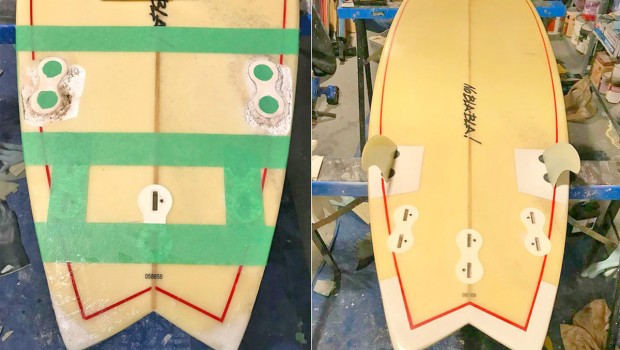
Published on March 5th, 2018 | by Michael Billinger
Photo by Michael Billinger | 0Tales from the Repair Shop: Duct Tape Nightmare and Installing Fin Boxes
With the upcoming river surfing season soon upon us here in Ottawa, I have put together a couple of tips based on a major repair I just completed. The Superfrog board seen in the pictures belongs to one of our local river legends. It came into my shop covered in duct tape and full of rotten waterlogged foam. The extent of the mould could be seen through the glass in numerous parts of the board.
Duct Tape
It can be a session saver, but by no means should it be considered a season saver. Duct tape is not waterproof and will let water into your board over time. That water will cause your foam and fiberglass to mould and rot and will destroy your board. Use a waterproof tape to get you through a session or local two, but have a ding repaired as soon as possible if you want to get the most out of your board. But be careful which type of tape you use. Those that are for industrial applications do a good job of keeping water out but have very strong adhesives, which may tear off some of the good fiberglass when you attempt to remove the tape or it may leave a residue that is a nightmare to get off.
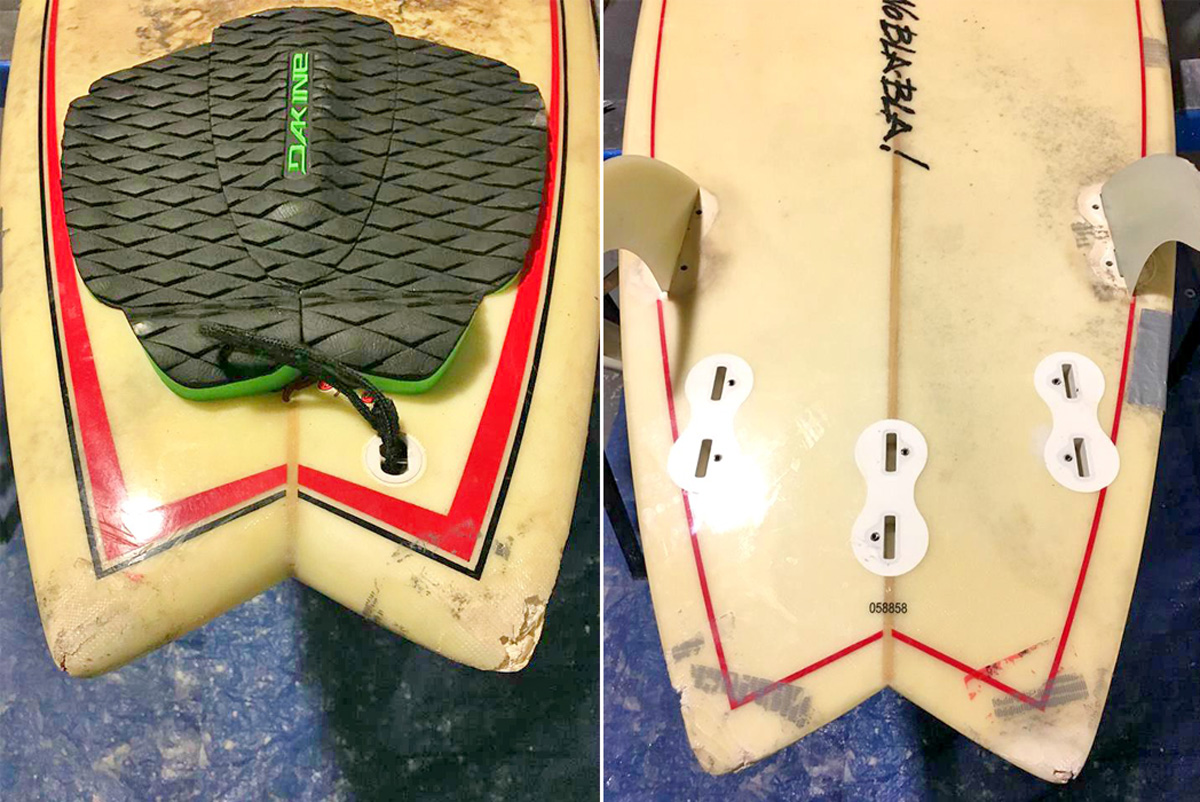
Dings at the tail and on the rails, previously covered in duct tape
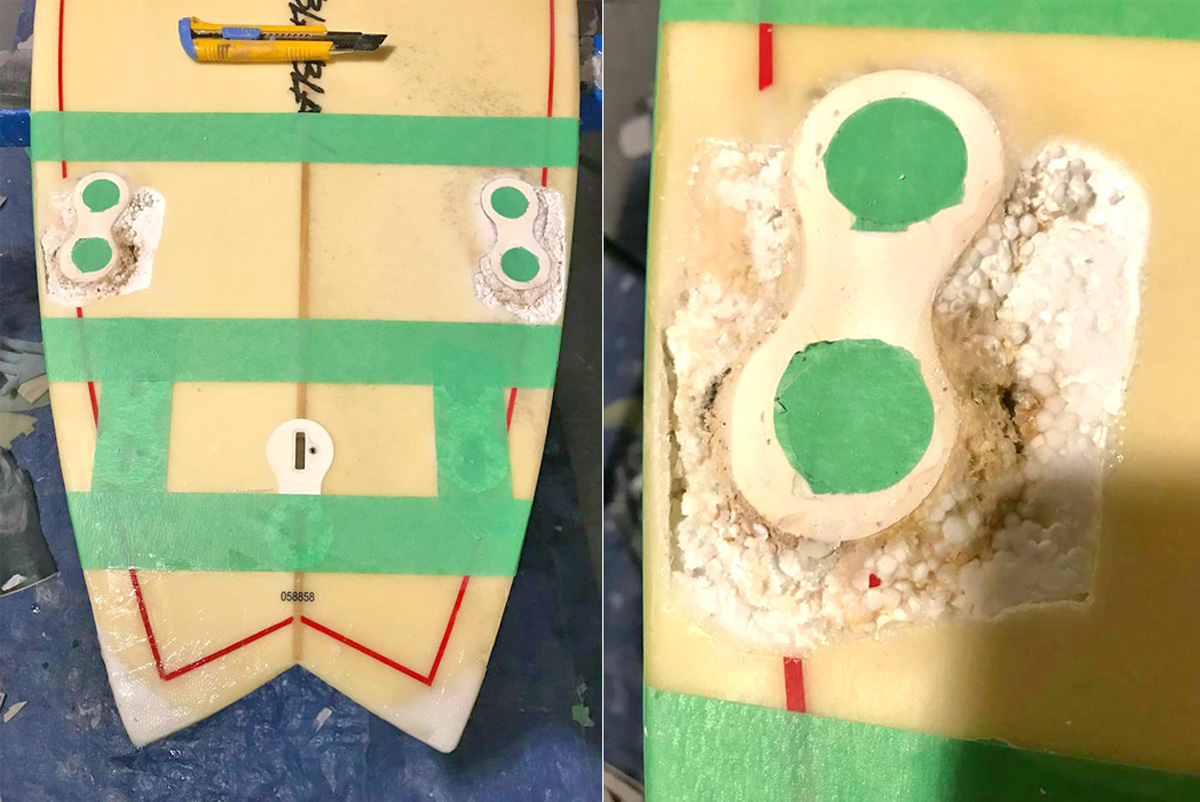
Waterlogged foam around the fin boxes
Fin Boxes
Older boards tend to have FCS X2 fin plugs, which are two individual plugs per fin (one per fin tab). Many newer boards have FCS Fusion or FCSII boxes (or Futures, of course). These boxes are stronger and much less likely than fin plugs to pop out if you hit a fin on a rock or something else that is hard. However, they do tend to crack around the edges, which can let water in, which can lead to foam rot when water gets in.
If the foam around the fin boxes has rotted, there are a couple of options for repair. One is to rip out the fin boxes and replace with new ones, but both Fusion and FCSII boxes were meant to be installed before the board is glassed, so this is not ideal (though not impossible). A new method that I just tried was to remove all of the rotten foam, replace with filler, and to fill in, paint, and glass over the existing Fusion boxes without removing them. I then drilled them out and installed FCS X2 plugs directly into the old Fusion plugs. This works well because FCS X2 plugs are meant to be installed after a board is glassed. I’m quite happy with the results – they are as solid as the original Fusion boxes and were easier and cheaper to install.
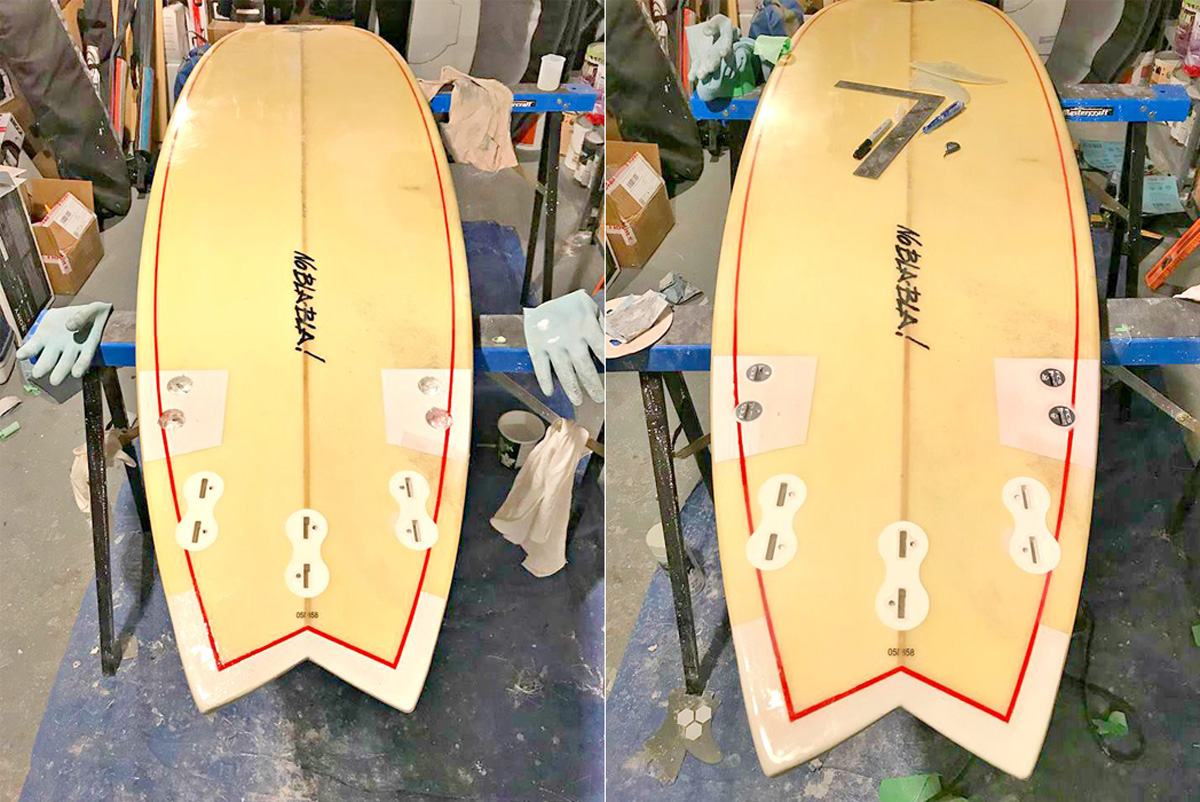
New fin boxes installed and dings repaired
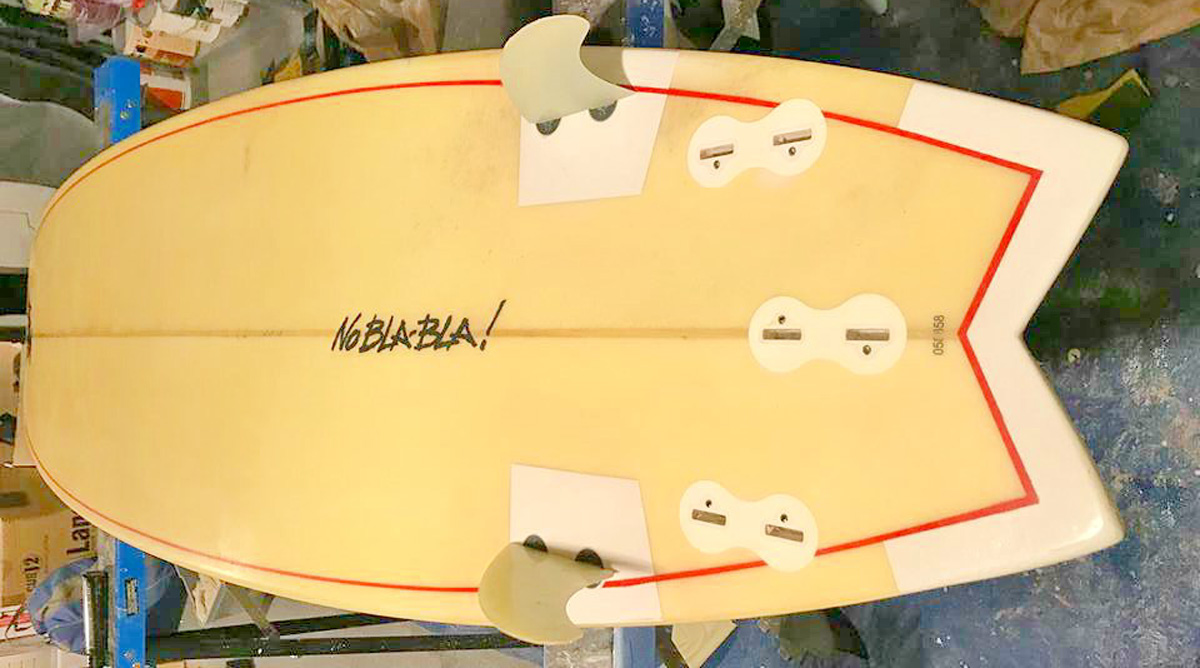
Board ready to shred again
Final Note
My goal is to continue to share this sort of information with our community when I see specific problems arise. I don’t expect to get rich doing repairs, and I’m certainly not able to quit my day job, so I would rather try to educate others so that they can keep their equipment finely tuned and significantly increase the lifespan of their boards.















